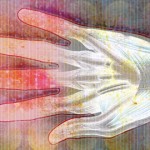NEW YORK (Reuters Health)—A European working group has formulated consensus-based recommendations for the diagnosis and treatment of juvenile dermatomyositis (JDM) with the goal of producing a “standard of care” for patients with JDM throughout Europe.
The group is part of a European initiative called SHARE [Single Hub and Access point for pediatric Rheumatology in Europe] launched in 2012 to optimize and disseminate diagnostic and management regimens in Europe for children and young adults with rheumatic diseases.
In their Aug. 11 online paper in Annals of the Rheumatic Diseases, Dr. Annet van Royen-Kerkohof, University Medical Center Utrecht, the Netherlands, and colleagues note that JDM is a rare disease within the group of pediatric rheumatic diseases that can lead to significant morbidity.
“Evidence-based guidelines are sparse and management is mostly based on physicians’ experience,” they write. “Consequently, treatment regimens differ throughout Europe.”
The working group formulated 62 recommendations for the diagnosis and management of JDM, based on a systematic literature review and consensus procedure. “In total, 7 overarching principles, 33 recommendations on diagnosis and 19 on therapy were accepted with >80% agreement among the experts,” they report.
Topics include assessment of skin, muscle and major organ involvement and suggestions for treatment at disease onset and in refractory disease.
The mainstay of therapy is high-dose corticosteroid initially in combination with disease-modifying drugs like methotrexate or cyclosporine, the authors say.
“Early and aggressive therapy may prevent or stabilize organ damage and disease complications like calcinosis, the latter being associated with significant morbidity due to pain and risk of infection,” the authors note. “JDM treatment is largely based on experience of the treating pediatric rheumatologist. Management is complex and warrants a multidisciplinary approach including physiotherapists, specialist nurses and pediatric rheumatologists, with other specialists, as needed, for example, cardiologist/pulmonologist.”
“Close monitoring of patients’ disease status and well-being by an experienced multidisciplinary team is essential for a good clinical outcome. Recent evidence highlights the importance of treating skin disease aggressively as it is associated with high morbidity,” the authors say.
They also note that long-term follow-up studies are needed to clarify complication risks. Given the rarity of JDM, international collaboration will be needed to recruit sufficient numbers of patients, they point out.
Dr. van Royen-Kerkhof did not respond to a request for comment by press time.
This project was supported by a grant from European Agency for Health and Consumers (EAHC). Several authors have disclosed financial relationships with various pharmaceutical companies.

